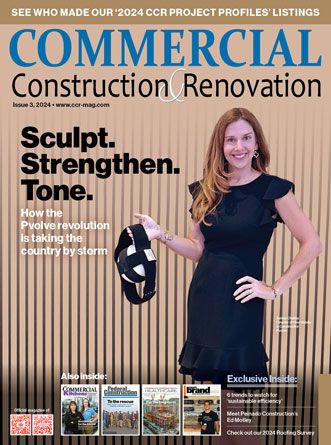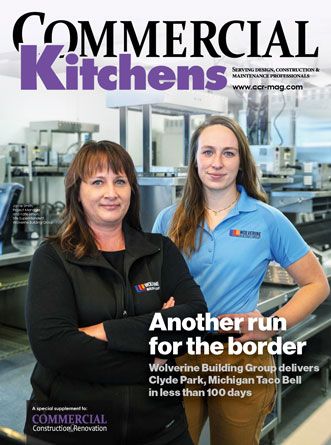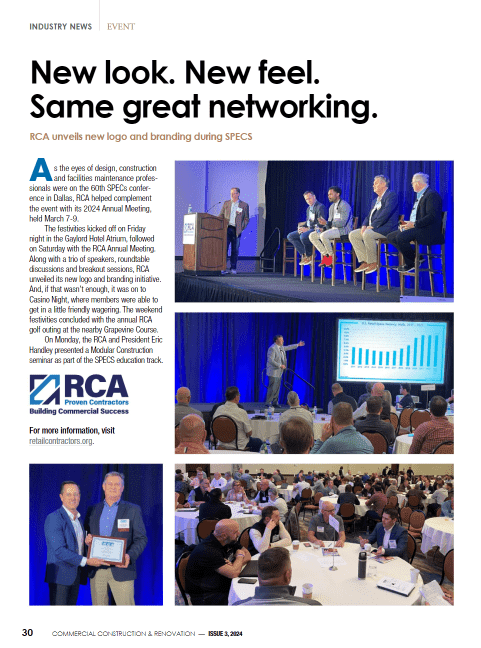The phrases, “home at work” and “work from home” are two sides of the same coin in the universal quest for work-life balance. Nowadays, employees with a flexible work schedule require a variety of environments that bridge the gap between office and home. As a result, public co-working spaces have transformed into the urban equivalent of the home office. Now, co-working spaces are cropping up in multifamily residential buildings as the new must-have amenity, taking the traditional typology of these shared spaces to brand new heights by creating hybrid lounge spaces where tenants can both buckle down and socialize in.
Conceived as an extension of the living room, lounges were originally designed to entertain guests and allow a resident to mingle with the larger residential community in a context that was decidedly about private home life versus office life. As Millennials have entered the workforce in larger numbers, their expectations and demands have influenced not only employee recruitment efforts, but also a number of industries looking to cater to this generation—including the multifamily residential community. Residential lounges have become just as much the domain of the remote worker as that of the resident looking to host a group of friends. Rentable conference rooms and library-adjacent environments equipped with communal tables for working have entered the game, along with all the expected set of high-end amenities such as rooftop terraces, game rooms, and gyms.
Because technology has allowed the lines between our work and personal lives to become so blurred, today’s well-designed residential co-working spaces must provide the comforts of home combined with the functionality of the workplace. Similar to the merger between a cozy living room armchair, a tall café counter against a sidewalk window, and a diner booth—these spaces must accommodate focused work, small group, and private meeting spaces, all while providing a sense of community, comfort, and connection.
In order to make these multi-purpose spaces successful, designers must ensure they are adequately equipped for the modern worker. As with open-concept offices, acoustics are an important detail to consider, as sound abatement will ultimately help create less distracting environments for people who choose to utilize the co-working space for…well, work. The addition of sound-proof rooms will also aid in creating a more comfortable environment for business purposes. Readily available Wi-Fi access; integrated electrical outlets in tables and lounge furniture; as well as the right blend of communal tables nooks, and counters for workstyle variety allow for both mingling and privacy.
A great example of a successful multifamily co-working space is The Work Lounge at Rheingold, in Brooklyn, as it combines private desks and communal lounge furniture. Another project that does this well is 15 Hudson Yards in Manhattan, where Diller Scofidio + Renfro and Rockwell Group designed a co-working space called the Atelier. The amazing city views from the communal working tables paired with smaller café tables, make for an inspiring place to work that feels nothing like an office but still allows inhabitants to be productive. The key to this is the furniture. While the furnishings may be plusher, they must still take ergonomics for work poses into account, providing comfort for typing on a laptop, and access to power in order to be useful and comfortable.
The allure of co-working spaces in the commercial realm combines the enticing flexibility of short-term leasing and the possibility of networking with a community that includes people from varying industries. While this convenience makes work more accessible, we have to be careful about maintaining a very different and more delicate boundary between work and life so as not to create an inescapable work bubble.
The strength of co-working spaces in residential communities is that they can provide a space, separate enough from our personal worlds, but also near enough to allow us to spend more time with those we love. Perhaps the rise and proximity of these types of co-working spaces will allow our homes to become less about work and commuting to an environment that has the proper technology and equipment, and more about living. The evolution of the work-life balance over the next few years will center around the seamless integration of our professional and personal responsibilities as humans, permitting us to construct our own emotional and mental boundaries in order to enjoy both worlds, without compromising either.
Sabrina Pagani, Principal, The Switzer Group:
As a Principal at The Switzer Group, Sabrina shapes design, leads project teams and guides clients to ensure unique outcomes that are infused with cross-disciplinary sensibilities. She blends a knowledge of work practices with a keen understanding of spatial conditions, in order to create effective work environments. Her design sensibility and approach have been cultivated over years of working across diverse project types that, in addition to workplace, include multi-family residential, hospitality and entertainment spaces.
About the Author: Prior to joining Switzer, Sabrina was a Studio Director at Gensler in the Bay Area and oversaw multi-location workplace design projects for a large, global Technology Company as well as for several smaller companies in the Bay Area. Workplace design often integrates elements of hospitality and residential design, and it is in this context that Sabrina is able to blend together concepts, details, and experiences to create a fresh perspective and approach. Sabrina has also led the interior design of large scale and highly complex projects including The Forge Multi-family Residential Tower in New York City. Passionate about inspiring the next generation of architects and designers, Sabrina has taught undergraduate design studios at the New Jersey College of Architecture at the New Jersey Institute of Technology (NJIT).










 The 2024 virtual Men’s Round Table will be held Q4, 2024, date TBD.
The 2024 virtual Men’s Round Table will be held Q4, 2024, date TBD.











